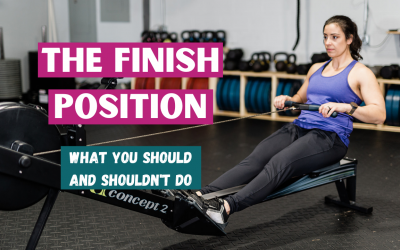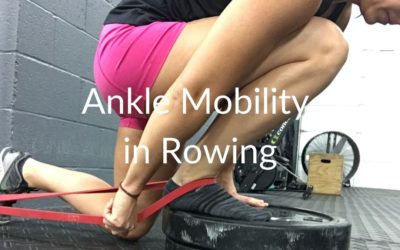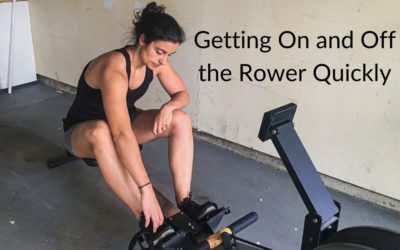The Starting Five
One of the easiest ways to improve upon a score for a workout is to make sure you’re starting it off right.
It’s easy to slowly build into the piece, but those splits in those first strokes will greatly affect your average. It’s worth it to start out strong so that you can put yourself in a position to make yourself successful.
The best way to do that is to have a solid start. I call it the starting five.
This is the first 5 strokes to get you moving and get the splits down. I do this same starting sequence whether I am on the rowing machine or in a boat. Every stroke in your starting five should be an all-out effort.
STARTING FIVE
- Half stroke
- Half stroke
- Three-quarter stroke
- Lengthen (more on this)
- Full stroke
TWO HALF STROKES
The first two strokes are half strokes. At the start of the piece, you’ll want to start halfway up the slide sitting ready to row. Your heels should be down on the footboards. When the piece starts, focus on driving through your heels and hanging off that handle with your lats. These half strokes still have your full body swing and arm pull, just half of the length of your slide with your legs.
Next, you’ll want to come up to the same place you started the first half stroke to do another. This will feel short, but the purpose here is to get that wheel spinning (or if you’re in a boat, to skip the boat along). If it feels like you can’t get as much power as you normally do that’s completely OK.
THREE-QUARTER STROKE
After the second half stroke, you’ll come a little further up the slide but not enough to be a full stroke. You shouldn’t have to lift your heels up in this three-quarter stroke either. Continue to focus on driving through those heels and hanging with your lats to get your power.
LENGTHEN
The fourth stroke in this starting sequence is called a lengthening stroke. This stroke will look a little different for everyone. Some need another three-quarter stroke, while others are closer to a full stroke. My lengthen stroke isn’t quite a full stroke, but it’s very close.
This lengthen stroke helps rowers who are in a boat together get more in sync. Most often you have people of varying heights in the same boat, and the lengthen stroke is more about being together and preparing for the first full stroke as a boat. Taller people in the boat may be closer to three-quarters, while shorter people may be closer to a full stroke.
If you’re on a rowing machine, you won’t have others to be in sync with, but this lengthen stroke can still be useful. I use it as a mental prep before starting my full strokes. It also helps me get my timing down and work more into my first full stroke.
FULL STROKE
Finally, you are at your first full stroke of the piece. Once you’re here, those splits on the monitor will most likely be faster than where you want to be during the majority of the piece. The key here is to slowly let up on your power and stroke rate to ease into the splits you want to be hitting.
You should be at your goal pace to hold within 100-150 meters.
While it may be counter-intuitive to start with shorter strokes, you’ll be amazed at how much easier it is to start off with crazy low splits. This will allow your average pace to be below your goal (and slowly rise throughout the piece) versus having to worry if your average pace will come down enough at the pace you are rowing.
If you want to see exactly what this looks like, I have a video below that you can watch for reference.
Do’s and Don’ts of the Rowing Finish Position
Today, I'm going to be talking about the finish position. That's going to be the back part of your stroke, where you finish your drive. I'm going to talk about what you want to be doing, and what you want to be on the lookout for when critiquing your own rowing...
Ankle Mobility in Rowing
Most people may think you don’t need much mobility in order to row. They may be correct, but you do need plenty of mobility to row WELL. One area that I want to focus on is ankle mobility. I want to explain why this is important, and some exercises you can do before...
Getting On and Off the Rower Quickly
Getting stuck in the foot straps on the rower can be frustrating when you’re shooting for a good time in the workout that day. Over the years I’ve used the same technique for getting on and off the rower quickly. Below I have a slideshow of the different steps to get...



